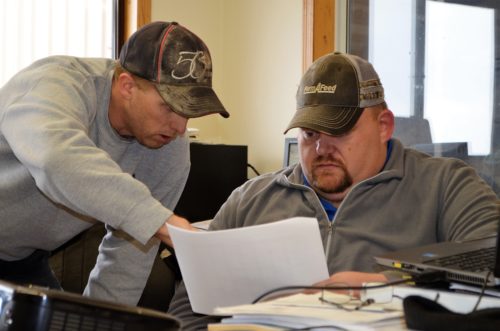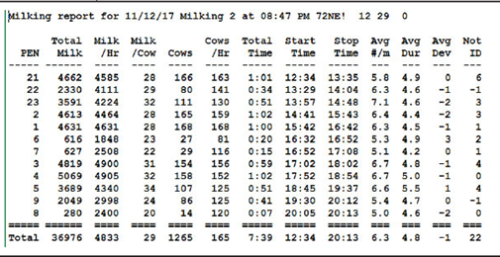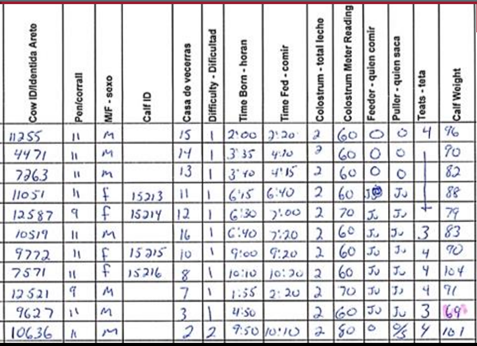What do your employees make of your dairy’s herd management records?
Posted: December 18, 2020 | Written By: Marco Lopez, Form-A-Feed Technical Services Specialist

As dairy farms become more sophisticated with the use of new technologies and digital dairy herd management records, on farm employee training needs to match the adaptation of new technologies and information management.
From the “good old” breeding wheel and individual cow cards to electronic dairy management software, the amount of herd data collected can be overwhelming for managers to interpret and pass on to key employees that are responsible for making important management decisions.
The following areas of dairy management are crucial for insuring employees interpret dairy records adequately to make day-to-day management decisions. Preventing the “lost in translation” of this information will keep farm departments linked together for successful farm management.
Production and Milk Quality

For the trained and experienced eye, this is a very simplistic milking report, and it gives the “big picture” for total milk per milking shifts and total number of cows milked. However, some milking technicians that see this report presented at a management meeting may not fully understand all the headings or the influence their individual parlor performance has on these numbers.
What an average milking technician wants to know:
- Total Cows – This will help explain how many people are needed in the parlor based on the parlor size and total milking cows.
- Milk Per Cow – Helps employees understand the “high group” vs “low group” production expectations and milk deviation.
- Cows Per Hour – Helps employees understand how different shifts perform and measures efficiency per group of employees.
What managers and supervisors need to explain:
- Total Time – Helps explain what is a normal “wait time” in the holding pen depending on group size. Explains how long it takes to milk the pen.
- Pounds Per Minute – Measure of proper udder prep and stimulation particularly during the first two minutes of unit attachment.
- Average Duration – Helps explain how long total milk out takes, and it could be a sign of proper stimulation and milking equipment performance.
- Average Deviation – Helps technicians understand possible management changes and drops in milk production.

The report Figure 2 above is a useful report for parlor managers or hospital managers.
What the parlor manager or hospital manager needs to know:
- Understand the relationship between stage of lactation (DIM), production (MILK) and previous somatic cell count (PSCC) vs current somatic cell count SCC as they make decisions about treating cows.
- Reproductive status (RPRO) – is she worth treating to keep her and let her calve? Or does she need be culled?
Calving and Maternity
Records, records, records! First, here is some information that should be available to anyone working in the calving and maternity area:
- List of cows due to freshen. Trained employees can easily detect a cow in labor. They should have a reference to check her due date. They can help communicate if the cows are late or early calving due to weather, nutrition or other factors affecting due date.
- Records Book. See Fig. 3 below. It can be a simple excel form with columns and the right headings in English and Spanish. The most common errors, even when a book exists, is in the Calf Weight variations section. This is very crucial particularly when calculating Average Daily Gains at weaning.

Wet Calf Management
Regardless of farm size or number of calves being cared for, every employee working with dairy calves should have access to records and information about the dams and their health status. It is common for workers to barely have enough time to pay attention to detailed records, particularly on larger dairy operations with multiple employees working around the clock.
In Summary
Working in coordination with production and milk quality, calving and maternity, and wet calf management it is important to keep the communication channels open by:
- Sharing herd health information.
- Have employee meetings regularly.
- Cross-share information between departments.
- Ask for feedback and for input regarding the information that employees need.
- Keep an open mind and listen to suggestions by the employees working the “front lines.”
The bottom line is that all employees should work towards achieving the goals set by the farm. As dairy consultants, often we are given 30 minutes to 1 hour to deliver technical training information to employees that work in different departments on the farm. Keeping employees informed about departmental performance, i.e. calving area, wet calves, hospital cow performance etc. should be top priority. Don’t just print the preset reports from your dairy records management system but DO take the time to explain what the numbers mean and what they can do to influence them. At Form-A-Feed, our technical support group can help bridge the communication gap so that your records analysis gets interpreted the right way and will not get lost in translation.